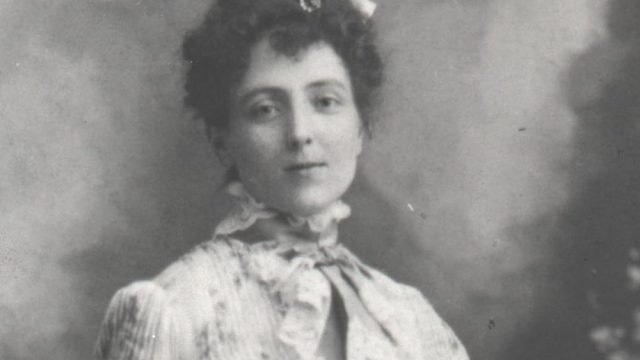There was more to her than Anne. In fact, she rather seems to have resented her perpetual association with the character; she wrote more not-Anne books than Anne ones. It’s a bit disheartening, though, that she’s been so badly represented in film and television. It’s as though no one who puts on her books quite understands her or her characters. And, yes, I started to watch the most recent Netflix version of Anne, and I’m definitely including that in “didn’t understand.” The Megan Follows miniseries from the ’80s starts well, but the Continuing Story has nothing to do with anything.
Lucy Maud Montgomery had an unhappy and lonely childhood in Prince Edward Island, Canada. She was mainly kept company by her imagination; she apparently had any number of imaginary friends. In 1908, she published one of the most famous Canadian novels ever written, Anne of Green Gables. It was the story of an orphan girl adopted by an unlikely pair, a brother and sister who kept a farm and in fact had wanted a boy. Audiences fell in love with Anne. Even after Montgomery tired of her, there Anne was.
Montgomery’s life was frankly not so happy as Anne’s. Anne had a miserable early childhood, but once she came to Green Gables, her life was mostly happy with a handful of dark spots, mostly in adulthood. Whereas Montgomery was not so lucky. Her mother died before she was two; her father left Montgomery with her grandparents and fled to what is now Saskatchewan. When she was fifteen, she spent a year with her father and stepmother—who by all accounts didn’t like her. She taught but didn’t like it. She had several suitors, one of whom died of influenza shortly after she rejected him at her family’s insistence.
When she did marry, it was not for love. She married rather because she was expected to. Her husband was a Presbyterian minister; the manse they lived in for some years had no plumbing. He had no interest in literature. He seems to have been mentally ill, and she spent many years caring for him. She had three children, but one was stillborn. A pill she gave her husband to try to calm him turned out to nearly poison him; he became paranoid about it even though the fault was not hers. He beat her. She became addicted to bariturates given to treat her own depression. World War I left such a horror in her—she clearly believed Allied propaganda wholeheartedly—that World War II only worsened her illness. It is not known if she committed suicide or not.
Anne Shirley is not a wholy cheerful, naive figure, the way she’s so often shown. Anne had a hard life. Like several of Montgomery’s heroines, she is orphaned; most of those not orphaned have at least one dead parent or in some other way family issues. Matthew and Marilla Cuthbert allowed her to shine, but she wasn’t exactly Pollyanna Whittier. Anne had her sorrows and bad days, and she if anything leaned into them when they came; she did have a flair of the dramatic.
Beyond Anne, there is Emily Byrd Starr, an orphaned girl living with her aunts who is determined to be a successful writer. There is Victoria Jane Stuart, Jane to those who love her, whose parents are separated and who only comes to herself when she gets to know her father. There is Valancy Stirling, repressed by her family and only coming to live when she believes she is going to die. Patricia Gardiner, who only wants to keep everything the same and is routinely heartbroken when she finds she can’t. Sara Stanley, the Story Girl, a tall flame of a girl with a story for every occasion. Even Bertha Marilla Blythe, Anne’s youngest daughter, trying to be young and happy during World War I. A few have had adaptations; none have had good ones.
I kind of wonder, honestly, if this is because they’re not just “women’s books” but “girls’ books.” During her lifetime, there was a poll of the greatest living Canadians; all fourteen were men. Though Montgomery did come in first in a list of greatest Canadian women at about the same time.
Help me buy The Blythes Are Quoted; consider supporting my Patreon!

